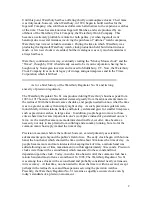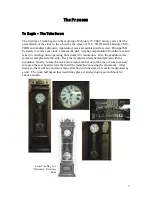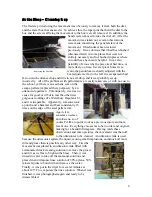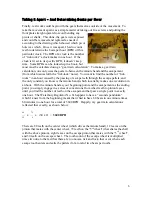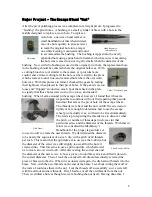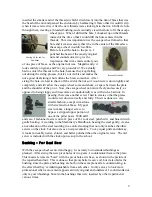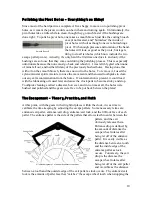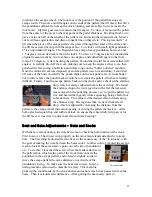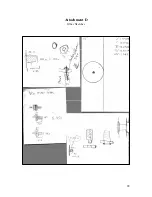
16
The wood case may be dusted with a slightly damp cloth and it is generally not advisable
to apply a dusting agent. Wax buildup and dirt will darken the case with years of use and
could destroy the original finish.
Moving the Clock
At some point it may become necessary to relocate the clock. This may be done safely if
certain measures are taken.
1. Allow the clock to run until the weight is well down in the case but not touching the
bottom.
2. Remove the pendulum by: Stop the pendulum from
swinging; remove the screw at the top; get a good grip
(the pendulum is pretty heavy); with a finger on the
leader, gently lift the pendulum up and away (it is held
on with a pin); replace the screw in the leader to prevent
it from being lost.
3. Remove the weight by lifting
up on the weight cover cap and
then unhooking the weight from
the cable.
4. Remove the movement from the case by loosening the two seat board screws located
behind the dial and under the movement. The movement will slide off of the seat board.
Once 1-4 have been accomplished successfully, the clock case may be moved like a nice
piece of furniture.
Setup After Moving
Stability of the case is the most important part of setting up the
clock. The case must be back against the wall in such a manner
that the top touches on both sides. A good test is to push against
the top to see if there is any give. If there is, it may be necessary
Summary of Contents for Waterbury Regulator 61
Page 1: ...1 No 61 Restoration Log Instruction Manual Andrew LaBounty 2002...
Page 24: ...21 Attachment C Original Sketch...
Page 25: ...22 Attachment D Other Sketches...
Page 26: ...23...

